I’ve been home about two weeks, and as usual, if he doesn’t get sufficient time running around outdoors — like, miles of running around — Koda becomes an insufferable pain in the ass. So we went for a walk over the weekend.
The original idea was to check out a trail that began on West Hill Road, in Hornby. So I drove up there with Koda, as always, leashed in the back seat. I got out, adjusted myself, put a prong collar and retractable leash on the Handsome Boy, and set off. The trail itself was indistinct, but the trees had been blazed, so the way was obvious.
We made it less than a hundred yards before I heard the deep, echoing boom of a shotgun in the distance. I think it was a shotgun. It might have been a rifle. In any event, although it was a mile away, the sound instantly reminded me that it was deer season and I was being kind of an idiot. I was walking in the woods, with an animal, and without any kind of bright colors on at all, in a place that has the biggest deer harvest in the state of New York. Although the odds of getting shot during deer season are seriously low, they’re not zero, and a deer slug means you’re dead.
So we walked down the road instead.
West Hill Road begins in the village of Painted Post, and climbs into the hills, heading north. It’s paved until after a few miles the pavement ends, and then it’s a classic Western New York dirt road, going up and down hills, and through forests, fields and farms. The countryside is very, very beautiful, but it’s also very, very empty with, I would guess, one structure every half mile or so.
Many of the beautiful old farmhouses are abandoned. I find this especially moving — at some point, whoever lived there either died, or surrendered to the relentless, brutal difficulty of being a small farmer in upstate New York. The house they leave behind is the memorial.
After a couple hundred yards we came to West Hill Cemetery. Koda and I hopped the fence, which someone had already trampled down.
In my more thoughtful moments, I occasionally think about where I want to be buried after I die. The answer, always, ends up being a country cemetery.
It was beautiful. And ancient — I saw graves there from the 1830s, as well as a number of men who’d died in the Civil War, and been brought back from places like Antietam to this final resting place. There were many infants and children.
Death, of course, is inevitable as is, I think, the discomfiting fact that unless you’re literal royalty or become some kind of human symbol, you’re going to eventually be forgotten, and disappear into eternity. Your children will have children, and they may know you as a name and some dates, but they will inevitably lose track of your story, and you. That isn’t a good thing or a bad thing. It’s just a thing.
Bigger, more well-known urban cemeteries, I have found, disguise this. They’re surrounded by roads and people. They’re cared for, to a degree, with the grass being mowed and modern monuments made of polished marble. People walk dogs there, and have picnics. It’s like an outdoor museum, and there’s a lot of clean, shiny and bright distracting you from what’s going on under the ground.
Country cemeteries are not like that. Evidence of grief and sorrow and decay are part of them. They’re rarely visited, and the effects of time, and nature are allowed to take their course. I think this makes them lovely, and sacred. Rather than overpowering the landscape around them, country cemeteries are part of it — graceful, quiet, peaceful. And again, if you look and think, bottomlessly sad. I don’t mind the sorrow. It’s fitting.
The inscriptions reflect this. Despite the inevitability of oblivion, we all retain the hope that someone will read the words about us carved in stone we hope will endure, and think of us. I thought about Elizabeth Robbins.
Elizabeth died in 1832. To put that year in perspective, the United States had only 24 states. Andrew Jackson was President, thanks to his legendary skill at slaughtering Indians. The entire country had a population of around 13 million people, which is about the size of greater New York City today. And Elizabeth, who had been born just before the Revolutionary War, passed away at 62. As I write this, I’m 62.
In the two centuries since she’s died, her gravestone has weathered and tilted. Her family has long since spread out or moved on, or simply and inevitably allowed her to become a line, perhaps, in a family tree, nothing more. But one day, almost two centuries ago, they gathered around her bed, in a house lit by candles and lanterns, heated by wood that they chopped and split with axes, and grieved at her death.
They dressed her, held a service, carried her here in a carriage, and laid her to rest. They probably didn’t know why she died, not really, and unlike today, were intimately familiar with death on a day-to-day basis. If you’re farming in a remote part of upstate New York in the early nineteenth century, you see death all the time. These were real people, they lived in this place, and this really happened.
Her gravestone is lovely, perhaps even more so thanks to the effects of time. The lettering, done by hand with a hammer and a chisel, is elegant and beautiful. Most heartbreaking of all is the image of weeping willow trees, the ancient symbol for sorrow, carved into the top. Elizabeth’s family must have been people of some means to afford this kind of craftsmanship, or perhaps she was deeply beloved by people who didn’t have the means. At least in death, she mattered, and two centuries later, if only as an echo, she still does. I am probably the only person who’s looked at her grave in many years.
Which is kind of the point of this essay. I am fascinated, in a low-key, ongoing way, by what people write on monuments. I’m not talking about things like the Vietnam Veterans Memorial, or the magnificent Georgian facade of my law school. I love the smaller, more obscure inscriptions in burial grounds, on more minor memorials. Each one has a story, and the story often raises more questions than it answers.
I currently live in a building that was once my junior high school. Outside the main entrance, as befits a school, is a flagpole. At the base of it is an extraordinarily modest little square plaque which simply says “in memory of” a woman named Elsie Clute. The inscription provides the name of the group, which apparently no longer exists, Elsie’s name, and the date. That’s it.
Before departing for college, I lived in Corning for eighteen years. The name sounds familiar. I think she was a beloved teacher. But the plaque says nothing more. What was she like? What did she do? No information is provided. The plaque is like a little checkmark, a statement that she was remembered, almost forty years ago, by some people. The honoree is gone, the group that remembered her is gone, there is no more information easily available — at least online. The entire project is, in the end, simply some people saying, “We existed”. It’s like the flag the astronauts left on the moon.
Similarly — and no, I don’t have a morbid obsession with cemeteries — a week or so later we visited the Townsend-Erwin Cemetery, another country burying ground in the valley where I grew up. I would ski to it occasionally in the winter (my family was big on cross-country skiing), or ride my bike there in the summer, or when I got older, hike there.
In that cemetery is this stone:
Because it’s difficult to read, here’s what it says:
The grave of our mother Rebecca consort of Wm McKeen.
Not wife. Consort. Now, that is interesting.
According to a well-read friend of mine, “consort” was a term used in Ye Olden Times for a woman who was basically a paid girlfriend. Note, by the way, that her maiden name is missing. All we have is “Rebecca”. Her boyfriend’s entire name is provided, in letters as large as hers, but all she gets is her first name.
A little more Amateur Hour digging perhaps explains this, and hints at a really, really interesting story.
Rebecca’s maiden name was “Erwin”. Her father was Colonel Arthur Erwin, for whom the township, the elementary school I went to, and numerous other buildings, streets and in fact, the entire valley, are named. The Erwins were some of the first white settlers in this area of New York state, and Colonel Erwin also served in the militia in the Revolutionary War. They were a big, big deal. They built enormous Greek Revival houses in the area, many of which still stand.
And Rebecca, it seems, didn’t get the Erwin family memo. She ran off with someone named McKeen, who might even have been Catholic. She had children. She was buried in the family cemetery, but not in the family plot. As befits a woman who was apparently a side piece, she now rests near the edge of the little cemetery, without her name. To me, I’m both saddened by her own family exiling her this way, even in death, and pleased by her apparent uncooperativeness.
My final example of all this has no writing at all:
For almost a hundred years, my family has been patronizing a wonderful, old-fashioned Pocono resort called Skytop. My grandfather went there when it opened. My parents went there, and took we kids. And my daughters have been there. This makes us what the place calls, I am told, a “legacy family.”
I love this place for many reasons, most of them having to do with memories. It’s odd what you retain. I remember the Skytop guidebook fifty years ago having the most wonderful, arcane, old-fashioned language — one sentence referring to how you might be so relaxed you could “fall asleep with a book or your knitting under the kindly rays of the mountain sun.”
The main lodge is an enormous, lovely, stone Dutch Colonial building. The front porch has rocking chairs that overlook the gardens. At the top of the steps leading down from the porch towards the gardens, the golf course and ultimately, the Lehigh Valley, is a compass embedded in the stone. It was doubtless installed when the building was constructed in 1928.
Compasses, like weathervanes, harken back to a time when we didn’t have apps on our phones that gave us highly accurate, in-depth weather information. A hundred years ago, in a rural place like Pennsylvania’s Pocono Mountains, people had to look at the sky and the clouds, and try to guess what was coming. A compass in the ground is part of that, a kind of permanent acknowledgement of the importance of weather, the smallness of the people who were subject to it, and the ongoing demonstration of this relationship. Wind from the south meant one thing, wind from the north meant something else.
And more to my point, perhaps, these same hopeful people believed that this is how it would always be. They believed that generations to come would find a compass embedded in the ground as useful and necessary and basic as they did. And so, on what I hope was a beautiful summer day in the mountains of Pennsylvania, with rhodondendrons blooming, with robins and chickadees singing, in some sort of formal ceremony I hope men in wool suits and hats launched their new venture under the kindly rays of the mountain sun, the same sun that shines on me.
Thanks, guys. Now I have a computer in my pocket, with instant weather data from anywhere in the world, but your compass still works. And it’s still beautiful.




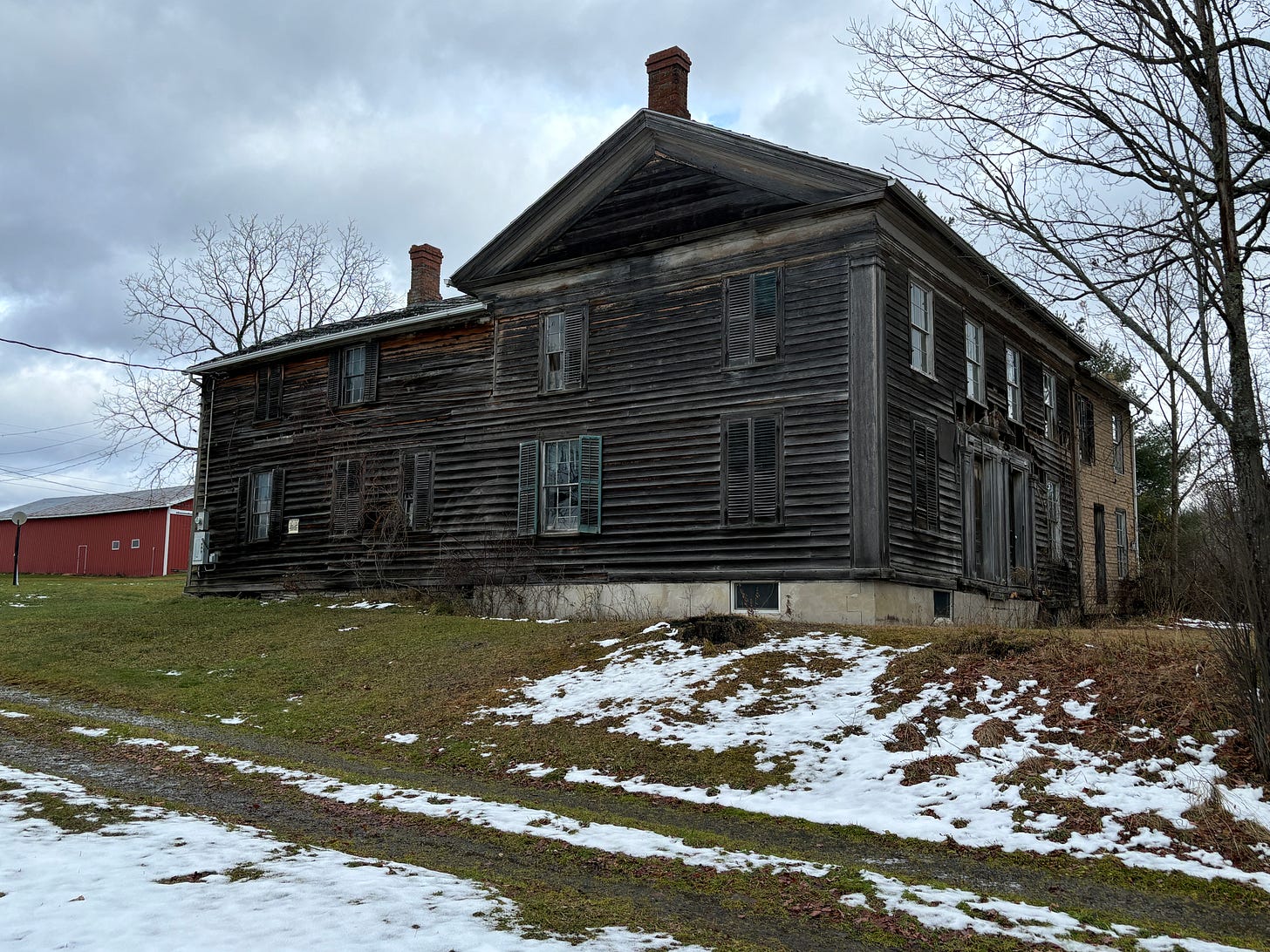
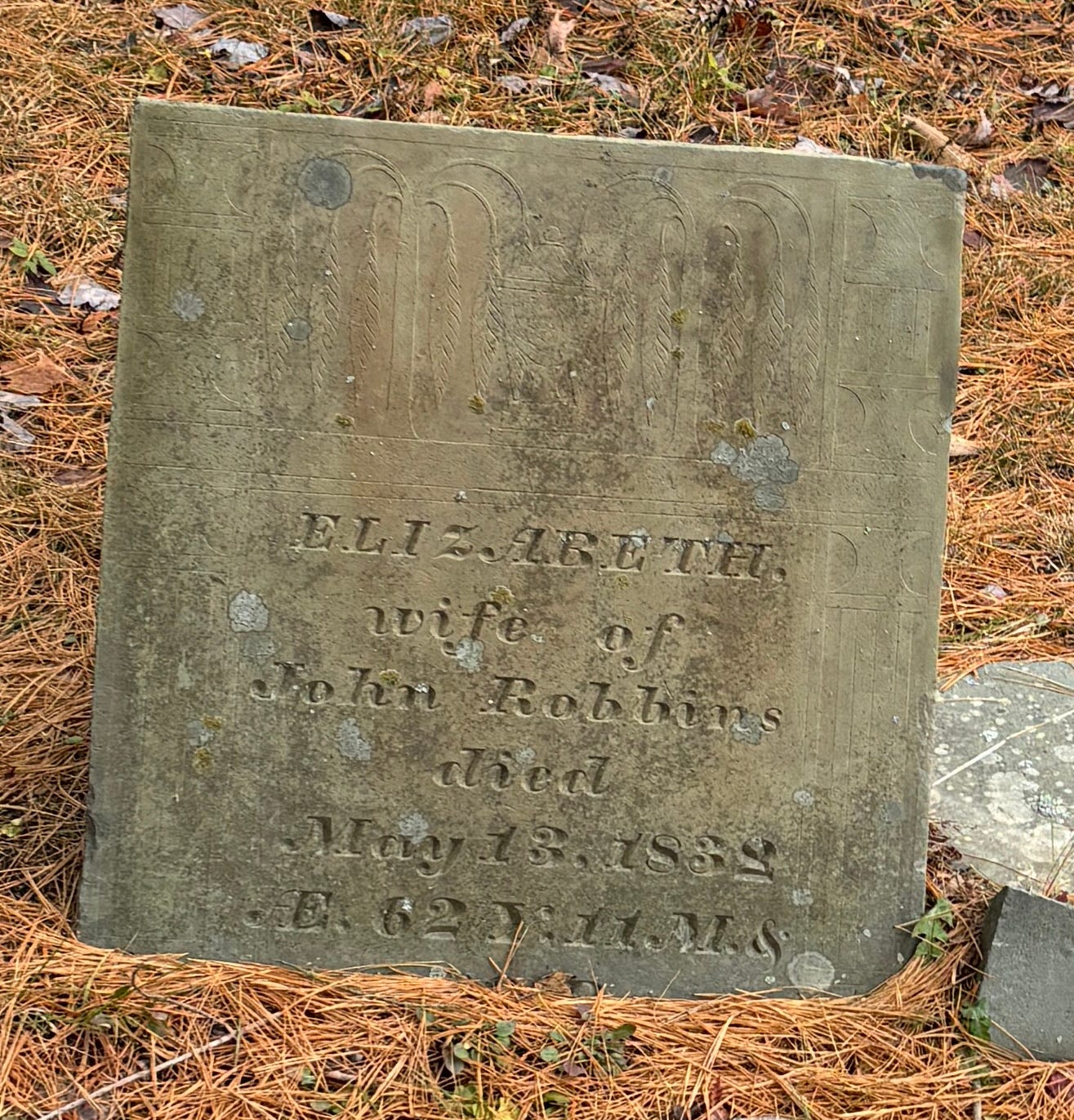
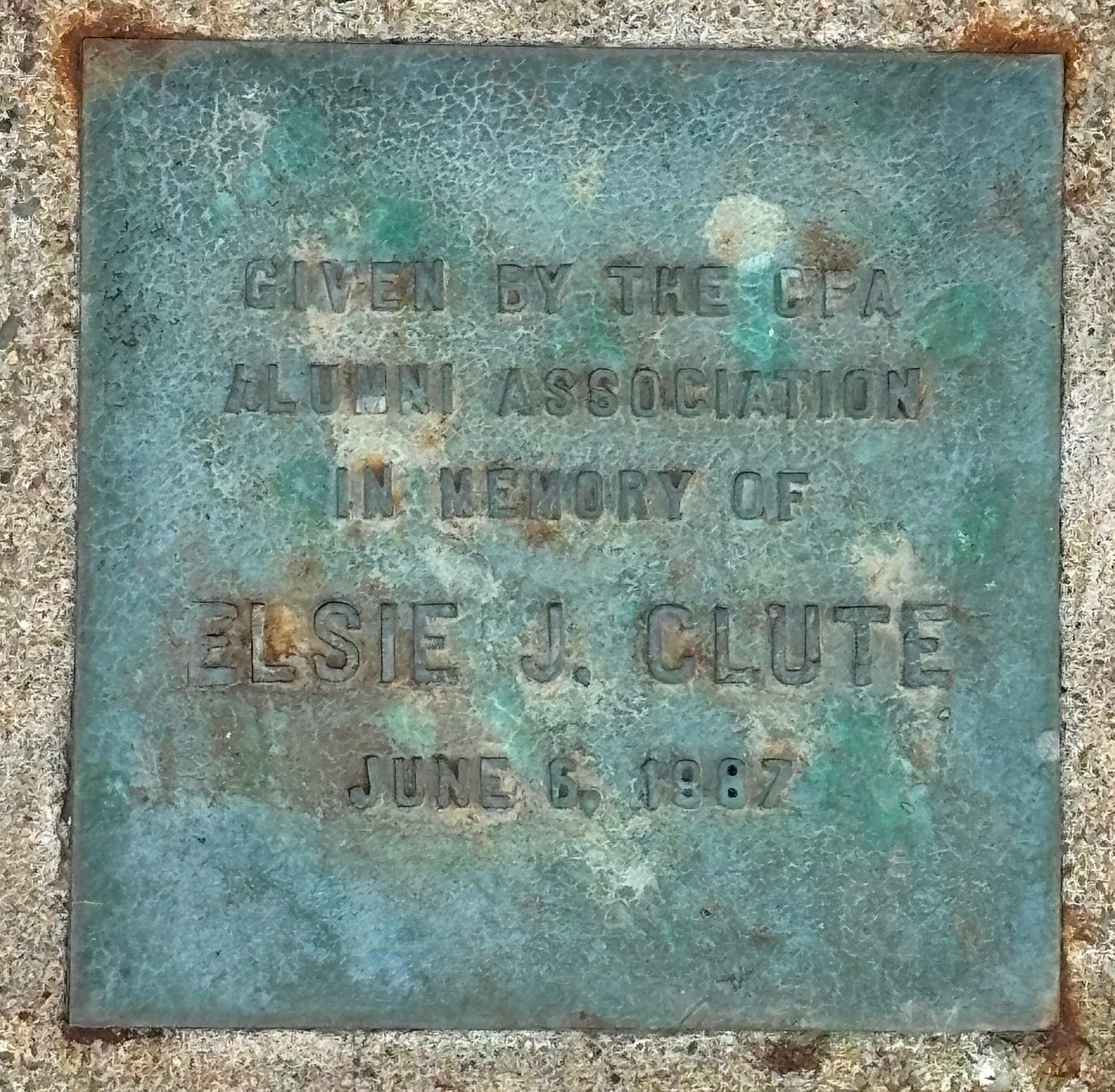

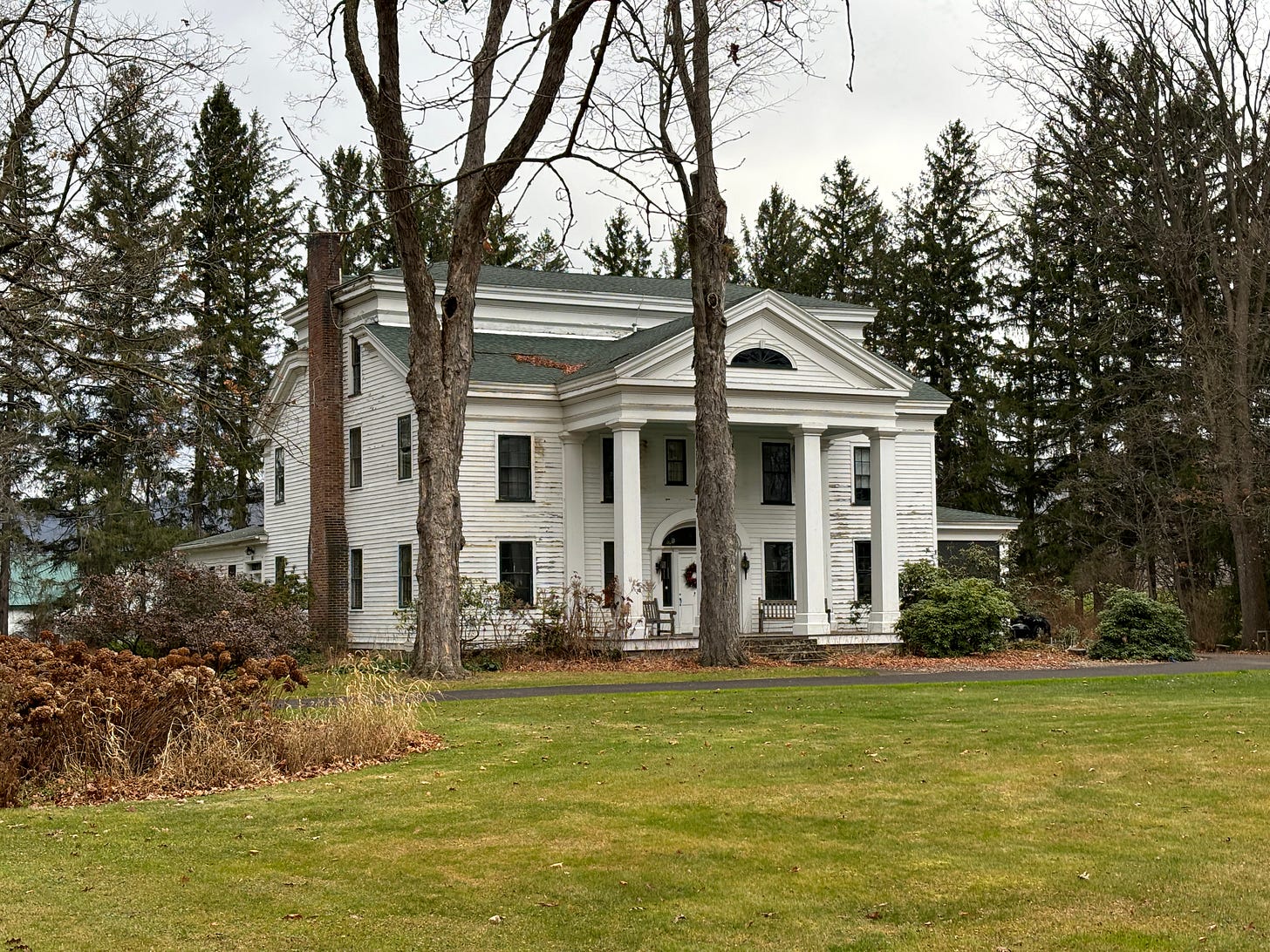
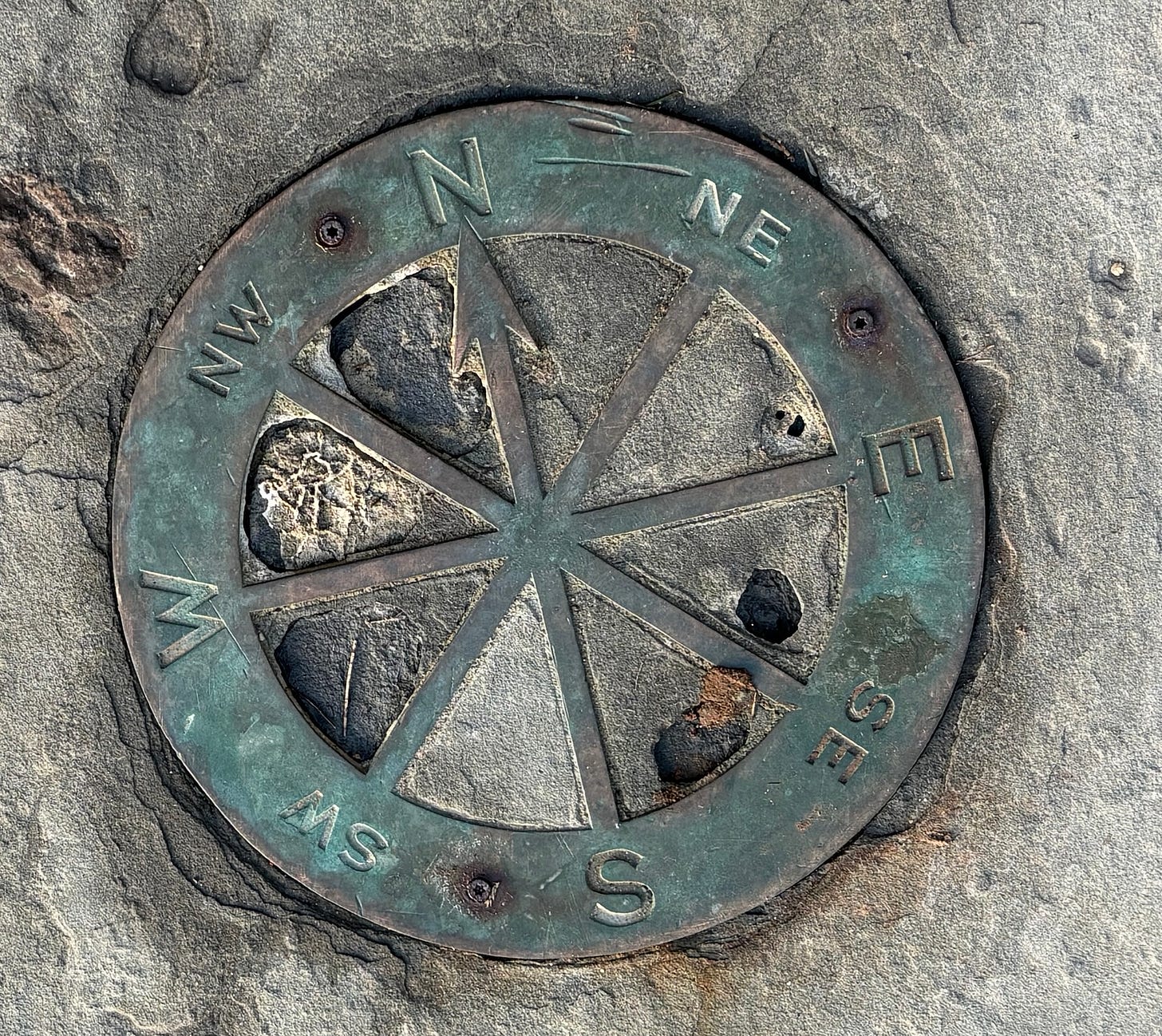

While in Newberryport, MA this summer, walking through a cemetary there were several very old tombstones which only read: Once Known. This struck me as very sad.
Excellent as always! We lived on Erwin Drive in South Corning. My parents bought their house from one of the Erwins (Margery I think) which was just down the street from Grandma Erwin’s place (next to what used to be the Stewart’s Dairy). I wouldn’t be surprised if your photo was what used to be Grandma’s house! Your writing as are my memories wonderful!